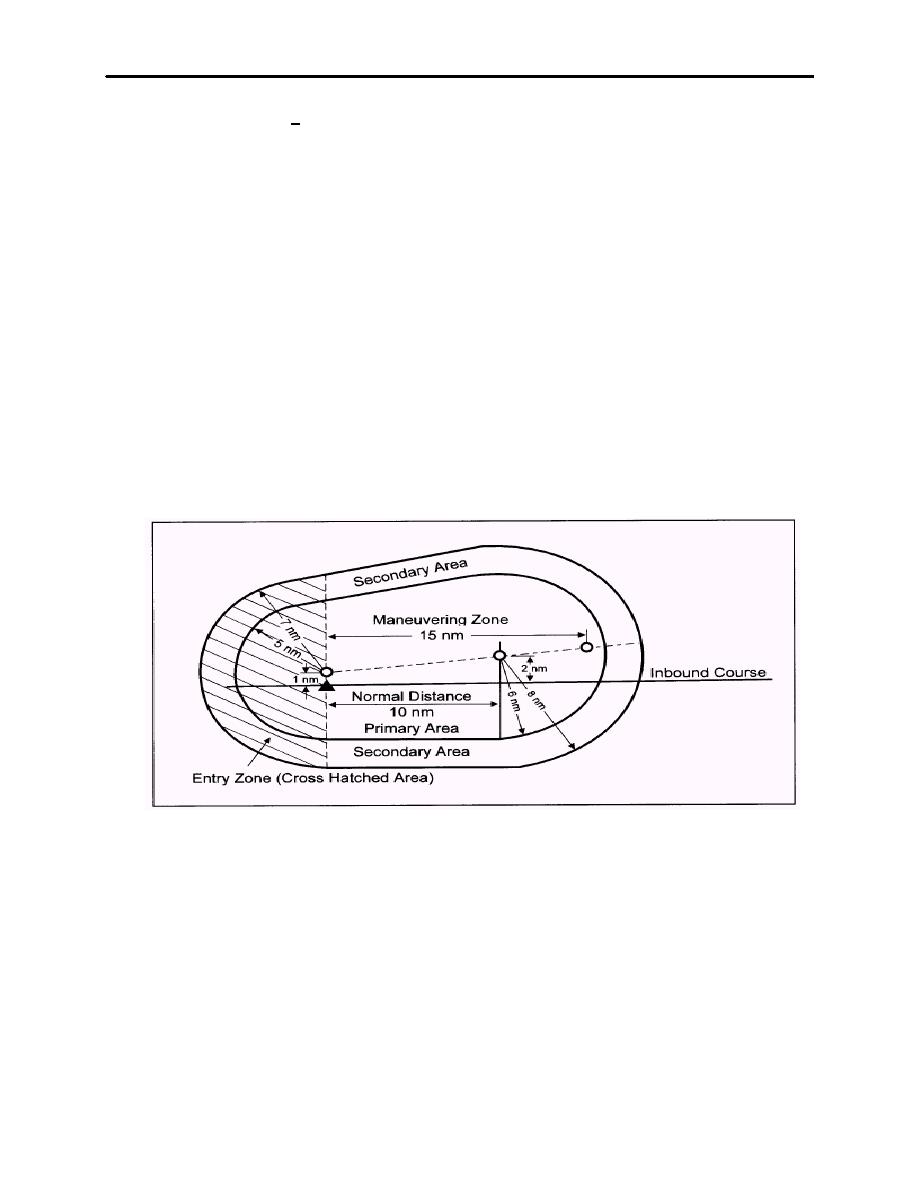 |
|||
|
|
|||
|
Page Title:
Figure 406-3. TERPs Procedure Turn Protected Airspace. |
|
||
| ||||||||||
|
|  `
JOINT ADVANCED MULTI-ENGINE T-44A
approaches, +5 bearings for NDB approaches, and the CDI off full scale deflection for ILS/LOC
approaches. Do not descend to the FAF altitude unless continued tracking within these parameters
is ensured.
When the navaid is on the field and no FAF is depicted, plan the outbound leg so the descent to
MDA can be completed with sufficient time to acquire the runway and position the aircraft for a
normal landing. When flying this type of approach, consider the point of interception of the final
approach course as the final approach point (FAP). This is the point you are established inbound
and begin your descent from the procedure turn completion altitude. Since it is considered
equivalent to the FAF, you should establish approach configuration and airspeed and complete the
Landing Checklist prior to the FAP.
If given a clearance for the approach from ATC which contains a restriction such as "maintain
altitude until further advised" then you are expected to fly the procedure turn ground track at your
last assigned altitude. After the "altitude restriction is deleted," the published minimum altitude of
the route segment being flown will apply.
If given a clearance for the approach from ATC which contains a restriction such as "I will call
your procedure turn" then you are expected to proceed outbound using course guidance as
appropriate until advised by ATC. In this case, the pilot is no longer obligated to stay inside the
remain within distance. If you are unsure of the clearance and/or instructions, query the controller.
Report "procedure turn inbound" (point where course reversal is complete and established
inbound) when requested by ATC or as a courtesy to ATC (for separation purposes) if radio
congestion permits.
Figure 406-3. TERPs Procedure Turn Protected Airspace.
(a). The 45/180 degrees Course Reversal. One method you may use to accomplish a procedure turn
approach is the 45/180 degrees course reversal maneuver.
Entry. Upon reaching the procedure turn fix, turn in the shortest direction to intercept the
procedure turn course outbound. You may use normal leadpoints if practical.
Proceeding Outbound. Intercept and maintain the procedure turn course outbound as soon as
possible after passing the procedure turn fix.
Descent. Do not descend from the procedure turn fix altitude (published or assigned) until you
are abeam the procedure turn fix and on a parallel or intercept heading to the outbound track
(worded differently: abeam or wings level outbound, whichever occurs last). Do not descend
from the procedure turn completion altitude until you are established on the inbound segment of
the approach.
RADIO INSTRUMENTS STAGE
4-35
|
|
Privacy Statement - Press Release - Copyright Information. - Contact Us |